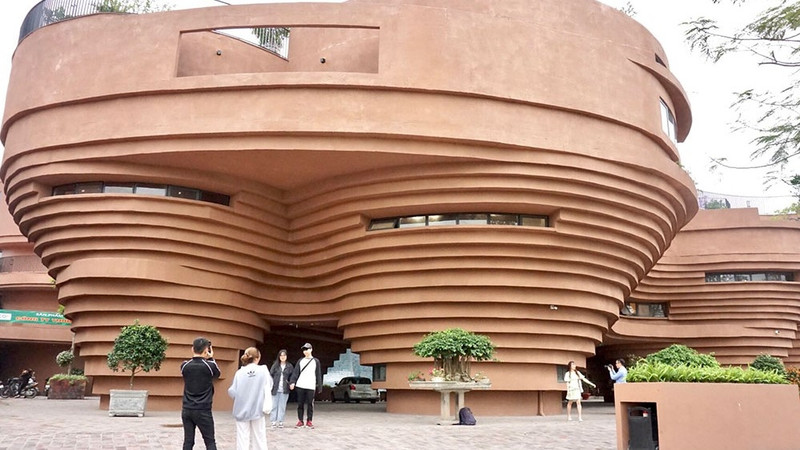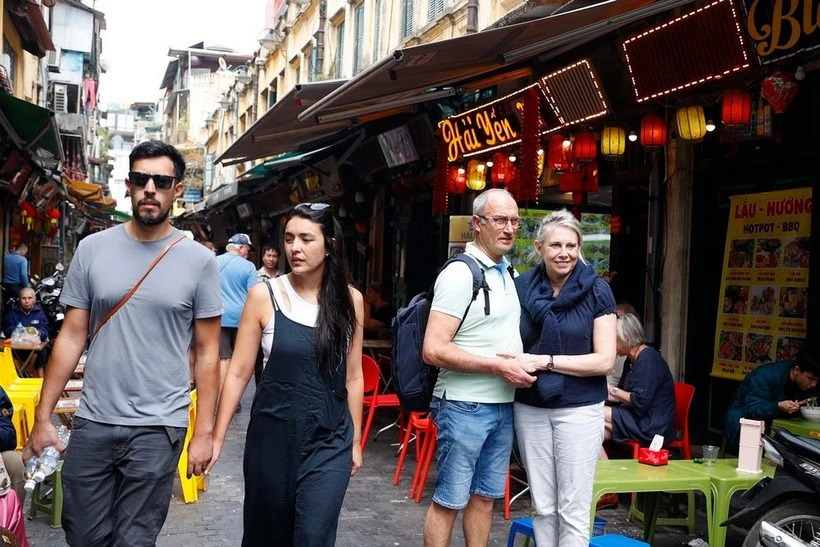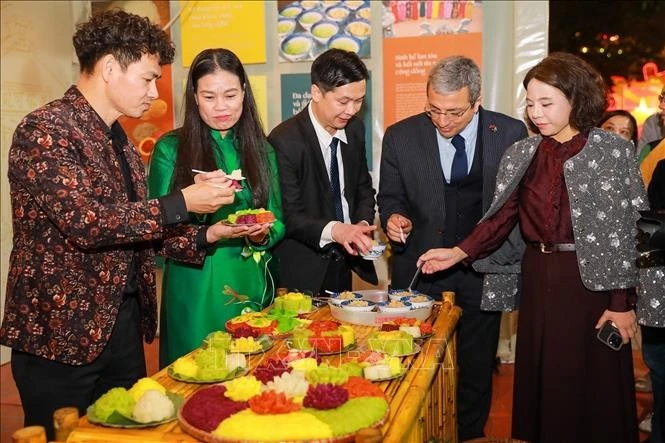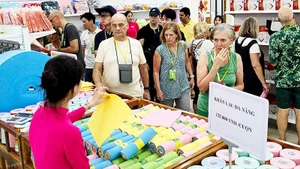Bat Trang Pottery Museum is located in Village No.5, Bat Trang Commune, Gia Lam District, Hanoi, about 15km from the centre of the capital. Construction commenced in 2018 on an area of 3,700 square metres. The museum is a part of the project “Quintessence of the Vietnamese craft village” of Quang Vinh Ceramic Co., Ltd. and the Hanoi Handicraft and Craft Villages Association with the aim of developing the craft village. From the museum, visitors can see Bac Hung Hai Canal on the opposite side. Built at a cost of VND150 billion, the museum is expected to be put into operation in June.
The museum consists of seven funnel-shaped buildings which are intertwined together, their outer walls carved into multi-layered patterns that forms a unique work. The design is said to have been inspired by pottery wheels – the signature tool of potters. From another perspective, it is like the image of a giant ancient pottery kiln of the ancient Bat Trang people. The work also makes the most of Bat Trang Village's ancient materials such as traditional ceramic tiles, mosaic tiles and baked tiles that bring the most authentic colours to the museum.
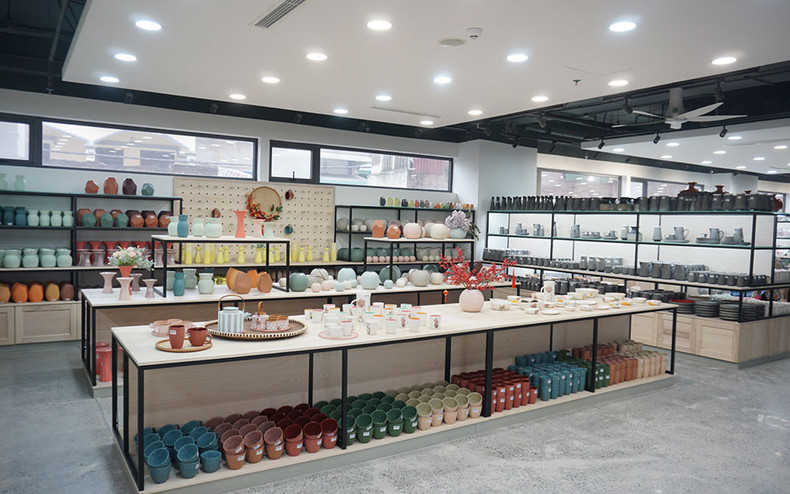
Showroom displaying and selling ceramic products in the museum.
The museum has three exhibition floors. The first floor is an area for artists to display their most valuable works, thereby connecting visitors with artisans. The floor is also a suitable place for activities and big events about the ceramic. Additionally, because the open space is very large, it is very suitable for programmes, big events or traditional cultural festivals.
The 2nd and 3rd floor - the central area of the Bat Trang Ceramic Museum is the area to display artistic ceramic products throughout the process of formation and development of the Bat Trang ceramic village, including the types of ceramic glazes, from ancient to modern, with the changes in colour, shape and decorative motifs on ceramic products. The area helps visitors to gain an overview of the history of the craft village.
Meanwhile the rooftop has an outdoor theatre with stages reserved for events and performances. There will also be spaces for restaurants and cafes as well.
In addition to the idea of creating a space displaying handicraft products of the craft village and connecting traditional handicrafts, the museum is also expected to become a place to honour the craftsmen. The museum is considered as a traditional house, preserving and introducing all the cultural values of the Bat Trang ceramic village to visitors.
Although not yet officially put into operation, the museum has attracted many young people to visit because of its unique architecture. Duong Thi Nga (a student from Hanoi University) shared: “I really like the unique architecture of the museum. The swirls are designed to grow upwards, creating the feeling of being lost in some majestic canyon. I will definitely be back in June”.
